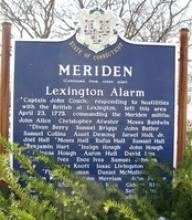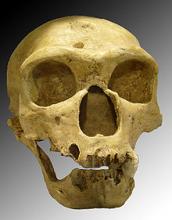Kowloon Walled City was a lawless, densely-packed phenomenon
Usually depicted in sci-fi novels and movies after the collapse of government and anarchic revolution, rambling cities overrun with lawless activity and shady characters are usually the products of fiction. Not so in the Kowloon settlement near Hong Kong, China. This nearly unrestricted place, called the Kowloon Walled City and nicknamed the “City of Darkness,” was host to prostitution, gambling, drug use and other unregulated activity from after World War II until its “citizens” were evicted in 1992.
In 1899, the British took control of the Kowloon Peninsula from China for the next 99 years, except for a magistrate’s fort that they temporarily let China keep. The Chinese left the fort, so when the British attacked it, they found it empty. From then on, the British did little but leave the small strip of land in limbo between the two governments. After Japan surrendered following World War II, China vowed to reclaim rights to the Walled City and by 1947, 2,000 squatters occupied the city to escape Chinese law. The British tried to drive these squatters out, but after failing to do so, by 1948, decided to leave the Walled City-dwellers to fend for themselves.
Because of both Chinese and British governments leaving it alone, the Walled City became crime-ridden in the next decade. Housing opium dens, brothels and gambling houses, as well as unlicensed doctors and dentists, the city became ruled by an organized crime group called the Triads. The crime in the Walled City ran so rampant that in the 1970’s Hong Police had no choice but to crack down on it. In 1973-74, Hong Kong police depleted the Triads’ power by holding more than 3,500 police raids, making over 2,500 arrests and seizing 4,000 pounds of drugs. By 1983, the police commander of the Kowloon City District said that the crime in the Walled City was under control.
This is saying nothing about the quality of the life in the city. One such reason for the poor quality of life in the area was all ofthe unregulated building that took place within the small city. In the 1960’s and ‘70’s, the Walled City consisted of almost 350 buildings with 10+ stories, although they could not exceed 14 stories because of the proximity to the airport. Most buildings had no utilities and crumbling foundations. Apartments were generally 250 square feet in size, with haphazard rooftop patios and caged balconies. Roofs were where families spent most of their leise and were full of TV antennaes, clotheslines and garbage. Surrounding the city were alleys that were only about 3.3-6.6 feet wide that were poorly lit and poorly drained. Hastily designed passages linked the upper levels.
In addition, during this period, the Walled City was the densest place on earth. 33,000 people inhabited the city and by 1987, 3,249,000 people lived within every single square mile. For comparison, Kowloon's neighbor, Hong Kong, had 17,000 people per square mile in 2009.
In 1987, the Chinese and British governments banded together to tear down the city because the sanitation condition was much lower than Hong Kong’s and was beginning to pose a danger to the city. Walled City dwellers were paid a total of $350 million dollars to vacate the city. Some citizens were not satisfied and had to be evicted in 1991 and 1992. The city was demolished by 1993 and a park now sits on its former site.







